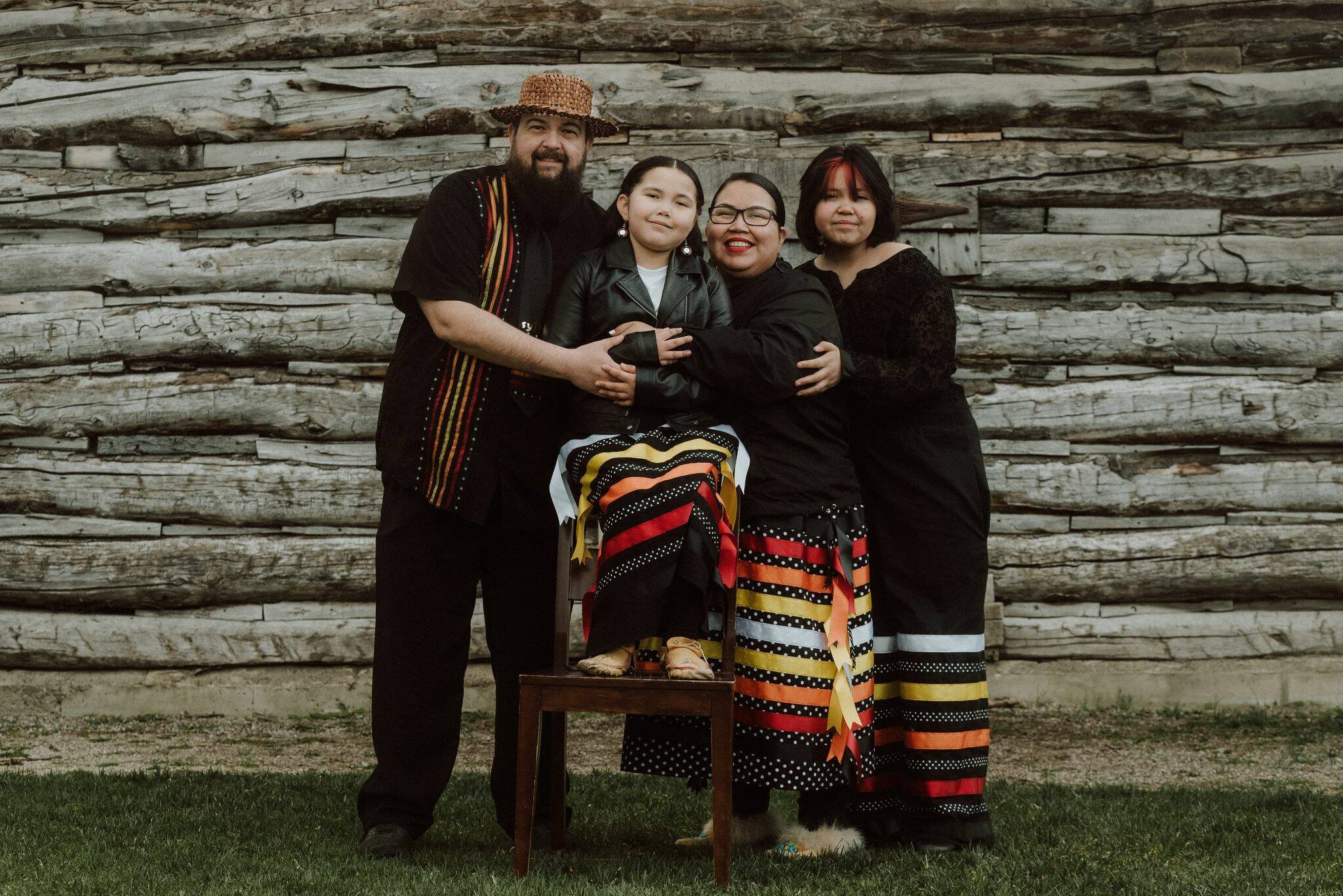A now internationally-recognized fashion designer started her journey in textiles and self-expression after attending her first pow-wow. Her pieces have since been seen in forests, and on runways around the world.
At 11 years old, Jill Setah participated in her first-ever pow-wow and immediately fell in love with the colourful traditions that she previously knew very little about. Her parents are survivors of Indian residential schools and were robbed of an opportunity to learn about their culture.
That weekend, Setah danced in a borrowed jingle dress and had fun with her friends, but the vibrancy of the costumes and the loving community stuck with her. She began regularly participating in pow-wows, as a way of reclaiming her culture.
“It was illegal to practice pow-wow dancing until relatively recently,” said Setah.
After having children, Setah began hand-sewing tiny regalia for her daughters to wear to pow-wows.
One day while painstakingly hand-sewing a junior girls fancy outfit, her husband suggested that she make the switch to a sewing machine.
There was only one problem, Setah had no idea how to use a sewing machine. Surprisingly, her outdoorsy mountain-man of a husband knew how to sew and taught her on a borrowed machine.
Parents in her community started asking her to make regalia for their children, and Setah’s career as a fashion designer took off.
She then attended a private fashion school with financial support from her band.
In class, she was the oldest and only Indigenous student. Setah said that she wasn’t inspired by the monotone outfits that they were encouraged to make, and faced push back from the teacher when she experimented with colour.
Setah said that she had to break out of the mould of making the same pieces of bland workwear.
As a fashion designer, Setah also has an unconventional way of creating a garment. Setah said that she doesn’t start with a sketch. Instead, she finds inspiration in colours, in the texture of a fabric and in Indigenous stories.
She also likes to create unique and inclusive pieces, like ribbon pants instead of a skirt, for two-spirit people and those who prefer pants to skirts, like her teenage daughter.
Setah works to blend fashion with function and culture.
“I like to make ribbon skirts that I can fish in.”
She is also working on a skirt that she can wear to hunt.
If people would like to purchase one of Setah’s pieces, they can contact her on Facebook at First Nations Fashion by Jill Setah.
@Rangers_mom
Jacqueline.Gelineau@kelownacapnews.com
Like us on Facebook and follow us on Twitter and subscribe to our daily and subscribe to our daily newsletter.

